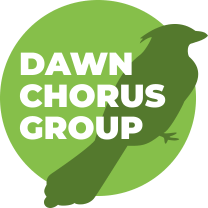Data is the lifeblood of effective social services. For nonprofit organizations striving to maximize their impact, transparency and collaboration have become non-negotiable. Research (link will download a .pdf) shows that accessible, standardized nonprofit data informs better decisions, fosters trust, and enables innovative partnerships. But how can organizations harness these insights to transform social services? A recent study on global nonprofit data offers actionable answers.
The Power of Transparency
Transparency is more than an ethical obligation—it’s a strategic advantage. The study analyzed 34 nonprofit databases from the United States, Canada, and the European Union, revealing a compelling truth: transparency fosters trust, which unlocks collaboration. Nonprofits with open, accessible data are more likely to attract funding, engage stakeholders, and build lasting partnerships.
For example, when organizations share information about their causes, leadership, and impact, potential collaborators can quickly identify synergies. This alignment often leads to shared initiatives, pooled resources, and amplified results.
One striking finding? Only 44% of the analyzed databases allowed users to search for nonprofits by cause. Imagine the opportunities lost when organizations can’t connect based on shared goals. Addressing this gap is crucial to fostering collaboration.
Practical Implications for Social Service Administration
Social service professionals can take several steps to implement the study’s insights:
- Standardize Data Collection: Ensure your organization collects and reports data consistently. Key metrics like operational areas, financials, and program impact should be available and easy to interpret.
- Leverage Technology for Accessibility: Make your data available through intuitive platforms. Whether it’s an interactive website or a searchable database, prioritize user-friendly designs.
- Promote Data Sharing: Establish trust-based partnerships where organizations openly share relevant data. This might involve creating formal agreements or participating in collaborative platforms like GuideStar.
- Engage Stakeholders with Evidence: Use data to demonstrate your organization’s impact and value. Clear, transparent reporting builds confidence among donors, volunteers, and beneficiaries.
Overcoming Barriers to Collaboration
While the benefits of data transparency are clear, the path is not without challenges. Many nonprofits struggle with limited resources, lack of technical expertise, or concerns about data misuse. Addressing these barriers requires collective action:
- Invest in Training: Equip staff with the skills to collect, manage, and interpret data effectively.
- Advocate for Policy Changes: Push for funding and legislation that supports data standardization and transparency.
- Adopt Open-Source Solutions: Use freely available tools to reduce costs and improve accessibility.
A Blueprint for Action
The study’s findings also underscore the need for a global nonprofit database. Such a resource could:
- Provide standardized metrics, enabling easy comparison and collaboration.
- Highlight gaps in service provision, ensuring resources reach underserved areas.
- Empower organizations to advocate for evidence-based policies.
Creating this kind of database is a formidable task, but the potential benefits—greater efficiency, increased trust, and a stronger collective impact—are worth the effort.
Real-World Success Stories
Consider a small nonprofit in rural Canada that partnered with a global NGO after discovering shared goals through a data platform. By combining their efforts, they implemented a food security program that reached thousands of underserved families. This collaboration was made possible by the transparent sharing of mission statements, impact metrics, and operational details.
Final Thoughts
The nonprofit sector is at a crossroads. By embracing transparency and data-informed decision-making, organizations can break down silos, build trust, and drive meaningful social change. Whether you’re an administrator, donor, or volunteer, the message is clear: data is the key to collaboration, and collaboration is the key to impact.
Start small. Share your story. Measure your outcomes. And most importantly, make your data accessible. Because when we see clearly, we act boldly—and together, we can achieve more.

